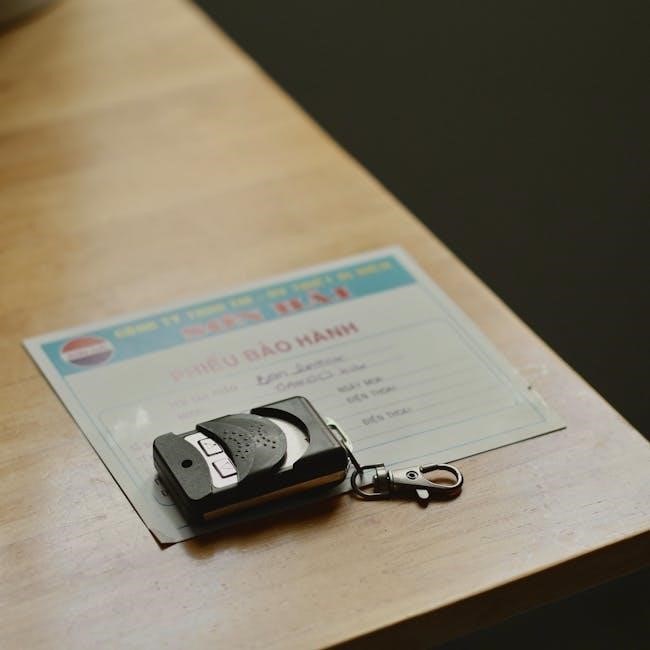Yamaha RX-V371 Manual: A Comprehensive Guide
This guide offers comprehensive insights into your Yamaha RX-V371 AV receiver. We’ll explore setup, features, troubleshooting, and more. Access instructions, acoustic adjustments, and speaker configurations. Find service manual information. Let’s optimize your audio experience, together, with this guide.
Welcome to the world of the Yamaha RX-V371, a versatile AV receiver designed to enhance your home entertainment experience. This receiver serves as the central hub for your audio and video components, delivering exceptional sound quality and seamless connectivity. Whether you’re a seasoned audiophile or a casual listener, the RX-V371 offers a range of features to suit your needs.
This comprehensive guide will walk you through every aspect of the receiver, from initial setup to advanced customization. We’ll delve into its key features and specifications, providing a detailed overview of its capabilities. You’ll learn how to configure your speakers, adjust acoustic settings, and optimize the sound to your listening environment.
Furthermore, we’ll explore the receiver’s various functions, including its built-in tuner, surround sound decoding, and support for multiple audio formats. You’ll discover how to navigate the user interface, operate the remote control, and access the online manual for additional information.
Finally, we’ll address common issues that users may encounter, offering troubleshooting tips and solutions. By the end of this guide, you’ll have a thorough understanding of the Yamaha RX-V371 and be able to maximize its potential for your home theater setup. This receiver boasts 80 watts per channel and supports 5.1 channel surround sound.

Key Features and Specifications
The Yamaha RX-V371 is packed with features designed to deliver a high-quality audio and video experience. At its core, it offers 5.1-channel surround sound, providing immersive audio for movies, music, and games. With a power output of 80 watts per channel (into 8 ohms), it delivers ample power to drive most speakers with clarity and detail. The receiver supports various audio formats, including Dolby TrueHD and DTS-HD Master Audio, ensuring high-resolution sound reproduction.
In terms of connectivity, the RX-V371 boasts four HDMI inputs, allowing you to connect multiple devices such as Blu-ray players, gaming consoles, and streaming devices. It also features a USB port for playback of audio files from USB drives and iPod/iPhone devices. The built-in FM/AM tuner lets you enjoy your favorite radio stations.
Other notable features include Yamaha’s CINEMA DSP technology, which creates realistic soundscapes for different types of content. The receiver also offers a range of acoustic adjustment options, allowing you to optimize the sound to your listening environment. The front panel includes convenient controls for volume, input selection, and other functions.
Furthermore, the RX-V371 supports 3D pass-through, enabling you to enjoy 3D movies with compatible devices. With its combination of features and performance, the Yamaha RX-V371 is an excellent choice for home theater enthusiasts. It also boasts a signal to noise ratio of 98 dB.
Setting Up Your RX-V371
Setting up your Yamaha RX-V371 receiver is crucial for optimal performance. First, carefully unpack the receiver and verify all components are present. Position the receiver in a well-ventilated area, away from direct sunlight and excessive heat. Connect your speakers to the appropriate terminals on the rear panel, ensuring correct polarity (+/-). Refer to the speaker configuration section for detailed guidance.
Next, connect your source devices, such as Blu-ray player, game console, and cable box, to the HDMI inputs on the receiver. Connect the receiver’s HDMI output to your TV. Connect any other audio sources using the appropriate analog or digital inputs. Plug in the power cord and turn on the receiver.
Use the on-screen display to navigate the setup menu. Select your preferred language and follow the on-screen prompts to configure basic settings, such as speaker settings, input assignments, and audio parameters. Utilize the automatic speaker setup feature, if available, to automatically calibrate the speaker levels and distances. Fine-tune the settings manually to achieve the best possible sound quality.
Finally, test the system by playing audio and video from different sources. Adjust the volume levels and other settings to your liking. Consult the owner’s manual for detailed instructions and troubleshooting tips. Ensure all connections are secure and that the receiver is properly grounded. Regular cleaning and maintenance are essential for longevity.
Speaker Configuration and Acoustic Adjustments
Configuring your speakers correctly is vital for achieving optimal sound quality with your Yamaha RX-V371. Begin by identifying your speaker setup – whether it’s a 5.1 system or another configuration. Connect each speaker to the appropriate terminal on the receiver, paying close attention to polarity (+/-). Ensure all connections are secure and properly seated.
Access the receiver’s setup menu to specify your speaker configuration. Indicate the size of each speaker (small or large) and the presence of a subwoofer. Set the crossover frequency for the speakers based on their capabilities. Experiment with different crossover settings to find the optimal balance between the speakers and the subwoofer.

Next, use the receiver’s acoustic adjustment features to fine-tune the sound. The RX-V371 may offer automatic calibration tools that use a microphone to measure the acoustic characteristics of your room. Follow the on-screen instructions to run the calibration process. Review the results and make any necessary adjustments.
Manually adjust the speaker levels and distances to compensate for differences in speaker placement and room acoustics. Use a sound level meter to ensure that all speakers are playing at the same volume level at your listening position. Experiment with different surround modes and sound processing options to find the settings that best suit your preferences. Regular adjustments might be needed.
Operating Instructions and Basic Functions
The Yamaha RX-V371 AV receiver is designed for intuitive operation, but understanding its basic functions will enhance your audio experience. Begin by familiarizing yourself with the front panel controls and the remote control. The power button turns the receiver on and off. Use the input selector to choose the desired source device, such as a Blu-ray player, game console, or streaming device.
The volume control adjusts the overall sound level. Use the tone controls (bass and treble) to fine-tune the audio to your liking. The surround mode selector allows you to choose different surround sound processing options, such as Dolby Digital, DTS, or Yamaha’s proprietary sound fields. Experiment with different modes to find the one that best suits the content you are watching or listening to.

The RX-V371 also features a tuner for receiving FM and AM radio broadcasts. Use the tuning buttons to scan for stations or manually enter frequencies. You can store your favorite stations as presets for easy access. The receiver also supports various audio formats, including MP3, WMA, and AAC. You can play these files from a USB drive or other connected device.
Explore the advanced settings menu to customize the receiver’s behavior. Adjust the speaker settings, audio parameters, and video settings to optimize performance for your specific setup. Refer to the owner’s manual for detailed explanations of each setting.
Troubleshooting Common Issues
Even with careful setup, you might encounter occasional issues with your Yamaha RX-V371. One common problem is a lack of sound. First, check that the receiver is powered on and the volume is turned up. Ensure the correct input source is selected. Verify that the speakers are properly connected and that the speaker wires are not damaged. If using HDMI, try a different cable or port.
Another common issue is distorted sound. This can be caused by excessive volume levels, incorrect speaker settings, or a faulty audio source. Reduce the volume and check the speaker settings in the receiver’s menu. Try a different audio source to rule out a problem with the original source. If the distortion persists, the speakers may be damaged.
If you experience video problems, such as no picture or a distorted image, check the HDMI connections. Ensure that the HDMI cables are securely plugged into the receiver and the display device; Try a different HDMI cable or port. Verify that the video resolution settings on the receiver and the display device are compatible.
If the remote control is not working, replace the batteries. Ensure that the remote is pointed directly at the receiver and that there are no obstructions in the way. If the remote still doesn’t work, it may be faulty.
For more complex problems, consult the Yamaha RX-V371 service manual. This manual provides detailed troubleshooting information and repair procedures.
Understanding the Remote Control
The Yamaha RX-V371 remote control is your primary interface for navigating the receiver’s many functions. Familiarizing yourself with its layout and buttons is crucial for optimal use. The power button, typically located at the top, turns the receiver on and off. Below that, you’ll find input selection buttons, allowing you to switch between different audio and video sources connected to the receiver.
The volume control buttons, usually marked with “+” and “-“, adjust the master volume level. Mute button silences the audio output. Navigation buttons, often arranged in a circular pattern, help you navigate the receiver’s on-screen menus. The “Enter” button confirms selections within the menus.
Dedicated buttons provide quick access to specific functions. The “Surround Mode” button allows you to cycle through different surround sound processing modes. “Scene” buttons offer one-touch access to pre-configured audio and video settings optimized for various content types, such as movies, music, or sports.
The remote also includes tuner controls for accessing and controlling FM and AM radio stations. These controls typically include buttons for tuning up and down, storing preset stations, and recalling stored presets.

Understanding the functions of each button on the remote control will greatly enhance your ability to operate and customize your Yamaha RX-V371 receiver. Keep the remote in a safe place and consult the owner’s manual for a detailed explanation of each button’s function.
Accessing and Downloading the Manual
Obtaining the Yamaha RX-V371 manual is straightforward, offering several convenient methods. The primary source is the official Yamaha website. Navigate to the support section and search for the RX-V371 model. Here, you’ll typically find the owner’s manual available for direct download in PDF format. This ensures you get the most accurate and up-to-date version.
Alternatively, online manuals directories provide access to a vast collection of user manuals. Search for “Yamaha RX-V371 manual” on these platforms to locate a downloadable copy. Be cautious when using third-party websites, ensuring they are reputable and trustworthy to avoid downloading potentially harmful files.
Sears Parts Direct often hosts manuals and parts diagrams for various appliances and electronics, including the Yamaha RX-V371. Check their website to see if the manual is available for download.
Consider searching online forums and communities dedicated to audio equipment. Users often share manuals and resources, providing another avenue for obtaining the RX-V371 manual.
Once you’ve located the manual, download the PDF file to your computer or mobile device. This allows you to access it offline whenever you need it. Keep a backup copy in case the original file is lost or corrupted. Having the manual readily available will greatly assist you in setting up, operating, and troubleshooting your Yamaha RX-V371 receiver.
Service Manual Information
The service manual for the Yamaha RX-V371 is a technical document intended for qualified service technicians. It provides detailed information about the receiver’s internal components, circuitry, and troubleshooting procedures. Unlike the owner’s manual, which focuses on user operation, the service manual delves into the intricacies of repairing and maintaining the device.
Accessing the service manual can be more challenging than finding the owner’s manual. It’s often available through specialized online repositories or directly from Yamaha’s authorized service centers. Some websites offer the service manual for a fee, while others may provide it freely. Always verify the source’s legitimacy before downloading any files to avoid malware or incorrect information.
The service manual typically includes schematics, block diagrams, parts lists, and step-by-step repair instructions. It’s essential for diagnosing and resolving complex issues that cannot be addressed through standard troubleshooting steps. However, attempting repairs without proper training and experience can be dangerous and may void the warranty.
If you encounter a significant problem with your RX-V371, consulting a qualified technician is always recommended. They possess the expertise and tools to accurately diagnose and repair the receiver, ensuring it functions correctly and safely. The service manual serves as a valuable resource for these professionals, enabling them to efficiently address technical challenges.
Remember that unauthorized repairs can potentially damage the device further. It’s best to leave intricate repairs to those trained and certified to work on electronic equipment.
